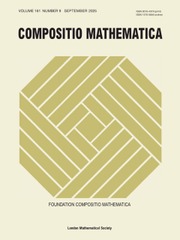Refine search
Actions for selected content:
118382 results for 域名价值评估工具下载官网,域名估价建议,三字母com域名评估实例,域名价值评估工具推荐域名城,域名价值评估系统推荐,等欢迎访问估价程序 V.25.11.01官方网站:www.gu.cx
A Famous Flower in Mountain Seclusion 山間の名花
-
- Journal:
- Asia-Pacific Journal / Volume 17 / Issue 1 / January 2019
- Published online by Cambridge University Press:
- 14 March 2025, e2
-
- Article
-
- You have access
- Open access
- Export citation
Taiwan and the Ryukyus (Okinawa) in Asia-Pacific Multilateral Relations - a Long-term Historical Perspective on Territorial Claims and Conflicts アジア太平洋地域の多国間関係における台湾と琉球諸島(沖縄)領土権主張や紛争を長期的視野でとらえる
-
- Journal:
- Asia-Pacific Journal / Volume 11 / Issue 21 / May 2013
- Published online by Cambridge University Press:
- 07 May 2025, e5
-
- Article
-
- You have access
- Open access
- Export citation
THE XIA SHANG ZHOU DUANDAI GONGCHENG BAOGAO 夏商周斷代工程報告 AND ITS CHRONOLOGY OF THE WESTERN ZHOU DYNASTY
-
- Journal:
- Early China / Volume 46 / September 2023
- Published online by Cambridge University Press:
- 02 April 2024, pp. 351-371
- Print publication:
- September 2023
-
- Article
-
- You have access
- Open access
- HTML
- Export citation

Compositio Mathematica
- Published for: the London Mathematical Society
-
- Journal
-
- Get access
- Contains open access
6 - Old Mandarin: The Ménggǔ Zìyùn 蒙古字韻
- from Part V - A New Standard
-
- Book:
- A Phonological History of Chinese
- Published online:
- 09 June 2020
- Print publication:
- 04 June 2020, pp 231-261
-
- Chapter
- Export citation
Regina v. HM Treasury and the Bank of England, ex parte Centro-Com srl
- United Kingdom, England. 6 September 1993 27 May 1994 14 January 1997
-
- Journal:
- International Law Reports / Volume 117 / 2000
- Published online by Cambridge University Press:
- 01 January 2021, pp. 444-551
- Print publication:
- 2000
-
- Article
- Export citation
The Queen v. HM Treasury and Bank of England Ex Parte Centro-Com Srl.
-
- Journal:
- American Journal of International Law / Volume 91 / Issue 4 / October 1997
- Published online by Cambridge University Press:
- 27 February 2017, pp. 722-727
- Print publication:
- October 1997
-
- Article
- Export citation
Appendix 4.2 - 国际博物馆日专访单霁翔
- from Appendices
-
- Book:
- Systemic Functional Grammar
- Published online:
- 15 June 2023
- Print publication:
- 08 June 2023, pp 433-438
-
- Chapter
- Export citation
Die Regiearbeiten der Peter-Konwitschny-Monkasei (P. コンヴィチュニー門下生) in Japan
-
-
- Book:
- The Brecht Yearbook / Das Brecht-Jahrbuch 46
- Published by:
- Boydell & Brewer
- Published online:
- 14 June 2023
- Print publication:
- 17 December 2021, pp 116-133
-
- Chapter
- Export citation
Center for Unearthed Documents and Ancient Script at Fudan University: Chutu wenxian yu guwenzi jiaocheng 出土文獻與古文字教程 (A Course on Unearthed Documents and Ancient Scripts). Shanghai: Zhongxi Book Company, 2024. ISBN 978 7 547 52134 2.
-
- Journal:
- Bulletin of the School of Oriental and African Studies / Volume 87 / Issue 3 / October 2024
- Published online by Cambridge University Press:
- 11 February 2025, pp. 573-574
- Print publication:
- October 2024
-
- Article
- Export citation
5 - COM–Poisson Regression
-
- Book:
- The Conway–Maxwell–Poisson Distribution
- Published online:
- 02 March 2023
- Print publication:
- 09 March 2023, pp 153-217
-
- Chapter
- Export citation
Appendix 2 - COM Derivation Details
-
- Book:
- Estimation Problems in Hybrid Systems
- Published online:
- 17 August 2009
- Print publication:
- 28 October 1999, pp 251-256
-
- Chapter
- Export citation
7 - The Dot-Com Bubble
- from The Third Era
-
- Book:
- A History of Financial Technology and Regulation
- Published online:
- 24 March 2022
- Print publication:
- 31 March 2022, pp 87-95
-
- Chapter
- Export citation
Chapter 9 - The Dot-Com Bubble
-
- Book:
- Boom and Bust
- Published online:
- 06 August 2020
- Print publication:
- 06 August 2020, pp 152-169
-
- Chapter
- Export citation
6 - COM–Poisson Control Charts
-
- Book:
- The Conway–Maxwell–Poisson Distribution
- Published online:
- 02 March 2023
- Print publication:
- 09 March 2023, pp 218-250
-
- Chapter
- Export citation
8 - The British Contract as Com-promise
-
- Book:
- Compromise
- Published online:
- 05 February 2013
- Print publication:
- 11 February 2013, pp 231-265
-
- Chapter
- Export citation
Appendix: COM/CORBA Integration
-
- Book:
- Distributed Object Architectures with CORBA
- Published online:
- 07 September 2010
- Print publication:
- 13 February 2000, pp 247-266
-
- Chapter
- Export citation
8 - COM–Poisson Cure Rate Models
-
- Book:
- The Conway–Maxwell–Poisson Distribution
- Published online:
- 02 March 2023
- Print publication:
- 09 March 2023, pp 284-311
-
- Chapter
- Export citation
4 - Multivariate Forms of the COM–Poisson Distribution
-
- Book:
- The Conway–Maxwell–Poisson Distribution
- Published online:
- 02 March 2023
- Print publication:
- 09 March 2023, pp 124-152
-
- Chapter
- Export citation
Pedigree of Plumpton, of Plumpton, com. Ebor.
-
- Journal:
- Camden Old Series / Volume 4 / April 1839
- Published online by Cambridge University Press:
- 23 February 2010, p. cxxxix
- Print publication:
- April 1839
-
- Article
- Export citation
